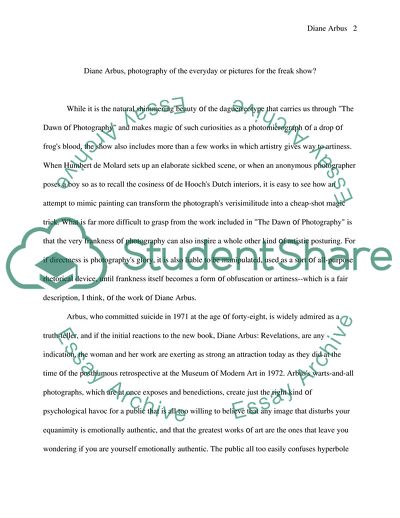Cite this document
(Diane Arbus: Photography of the Everyday or Pictures for the Freak Case Study, n.d.)
Diane Arbus: Photography of the Everyday or Pictures for the Freak Case Study. Retrieved from https://studentshare.org/performing-arts/1711500-diane-arbus-photography-of-the-everyday-or-pictures-for-the-freak-show
Diane Arbus: Photography of the Everyday or Pictures for the Freak Case Study. Retrieved from https://studentshare.org/performing-arts/1711500-diane-arbus-photography-of-the-everyday-or-pictures-for-the-freak-show
(Diane Arbus: Photography of the Everyday or Pictures for the Freak Case Study)
Diane Arbus: Photography of the Everyday or Pictures for the Freak Case Study. https://studentshare.org/performing-arts/1711500-diane-arbus-photography-of-the-everyday-or-pictures-for-the-freak-show.
Diane Arbus: Photography of the Everyday or Pictures for the Freak Case Study. https://studentshare.org/performing-arts/1711500-diane-arbus-photography-of-the-everyday-or-pictures-for-the-freak-show.
“Diane Arbus: Photography of the Everyday or Pictures for the Freak Case Study”, n.d. https://studentshare.org/performing-arts/1711500-diane-arbus-photography-of-the-everyday-or-pictures-for-the-freak-show.


